Business Community Environment
On Fox Island, an old Navy acoustics lab gets a new life
As a youth, Ty Clarke liked to water-ski and wake-board from his parents’ beach on the southwest shore of Fox Island.
Cutting through the glassy water of Carr Inlet, at the turnaround point on their runs, Ty and his friends couldn’t help noticing something off-putting: a neglected concrete box of a building squatting on the beach six houses down from his parents’. Barnacle- and seaweed-encrusted industrial barges bobbed creakily at the end of its old cement pier.
“We called it ‘Dr. Evil’s secret underwater lair’,” and warned each other not to wipe out near it, lest they be sucked in, Clarke recalled.
Now a 31-year-old commercial real estate broker, Clarke’s perspective on the building — actually a Cold War-era Navy lab, shuttered since 1992 — has changed a lot. Clarke bought it in 2021 and is renovating it to be his home.
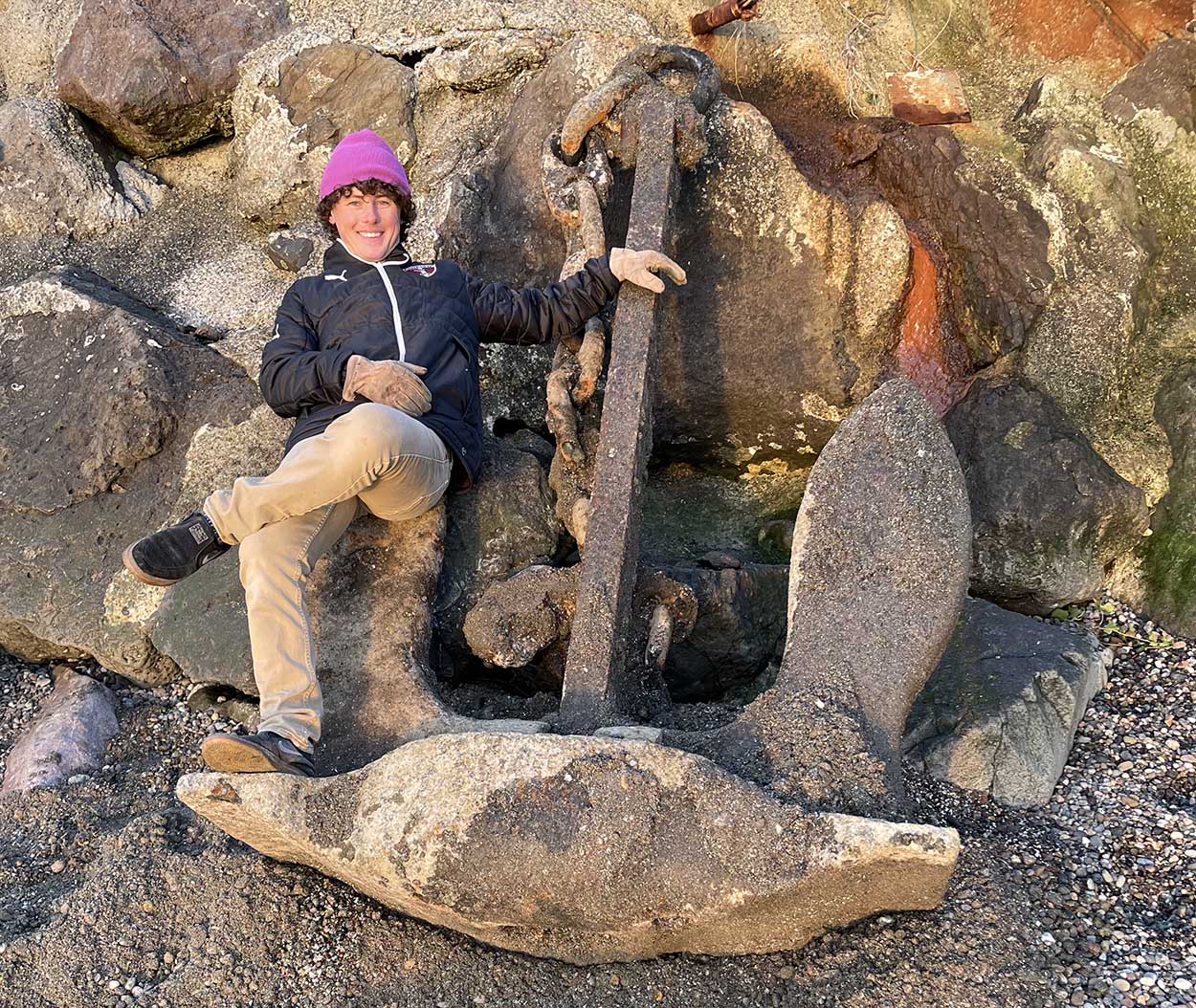
Ty Clarke with a 2-ton anchor found on his Fox Island property.
Adaptive re-use for former Navy lab
The concrete and steel structure that once seemed ominous has become a challenge in adaptive re-use, in which developers and architects recycle old buildings for new uses, figuring out ways to build off the rich history embedded in a property through its former function.
It’s a new life for the property at 630 3rd Avenue on Fox Island — or rather, a new chapter in a colorful existence that has seen its share of controversies. Chief among them was a 1950s dust-up before the beginning of Navy operations that had south Puget Sound leaders threatening lawsuits and even civil disobedience to block the Navy’s plans at the site.
Citing the project’s early stage, Clarke declined a reporter’s request for a tour, architectural drawings, or even many details of his plans. Filings with the Pierce County Planning and Public Works department describe the proposed changes as a “minor residential renovation.” It includes a new 600-square-foot bedroom that will add a third floor to the house; demolition of some exterior walls to allow a new deck over the existing floor plate; connecting a parking area to the entry door; and new exterior wall insulation, windows, and exterior siding throughout the building to comply with the energy code.
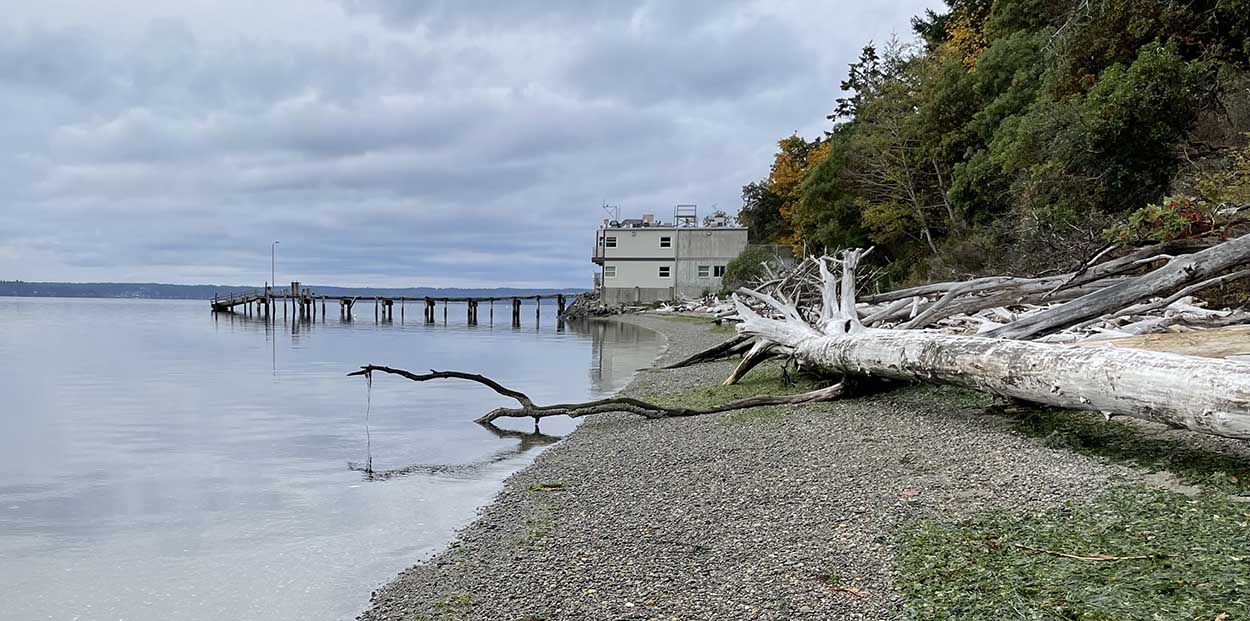
The old Navy lab from down the beach.
Under the submitted plans, the new house will be about 9 feet higher than the existing lab building, Pierce County Associate Planner Kelsey Bean said.
Clarke is seeking a Shoreline Exemption permit that will eliminate the requirement for a Substantial Development permit and thus avoid a higher level of review, Bean said. Several requirements for the Shoreline Exemption have been met in the project, but a biology review still needs to be completed, she said.
Clarke has yet to file for a building permit, Bean said. The paperwork in the Shoreline Exemption application states a $460,000 fair market value for his planned improvements, with construction projected to start on Aug. 15 and to conclude on Sept. 30 of this year.
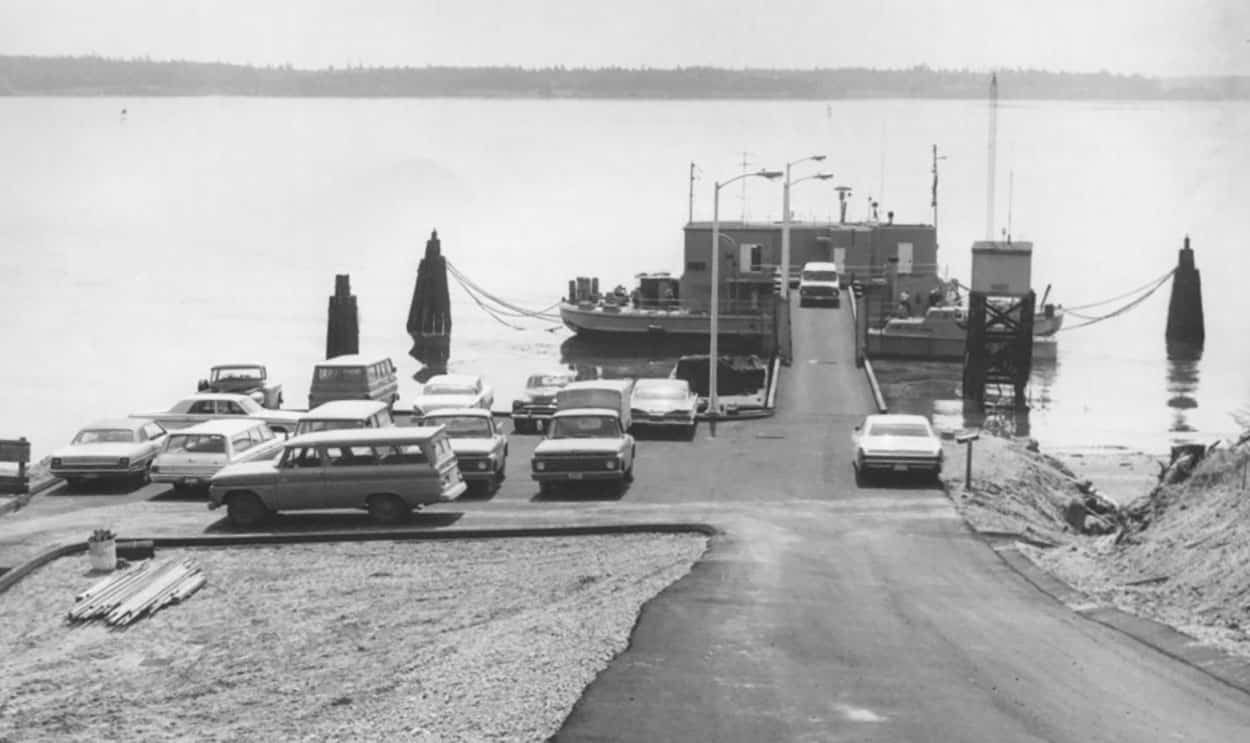
The lab site in 1969.
Building’s history
In its working life, the Fox Island lab was the base of operations for the Carr Inlet Acoustic Range (CIAR), a Navy operating area that measured the sound created by submarines, ships and some aircraft. A sub whose sound could be detected, it was said, was a sub that could be located and destroyed.
Below the surface of Carr Inlet, submarines traversed a pre-set course around hydrophones (underwater microphones) that collected sound data and fed it to the lab. The lab calculated the vessels’ “sound signatures.” This information was used to make existing subs quieter and to design more-silent vessels.
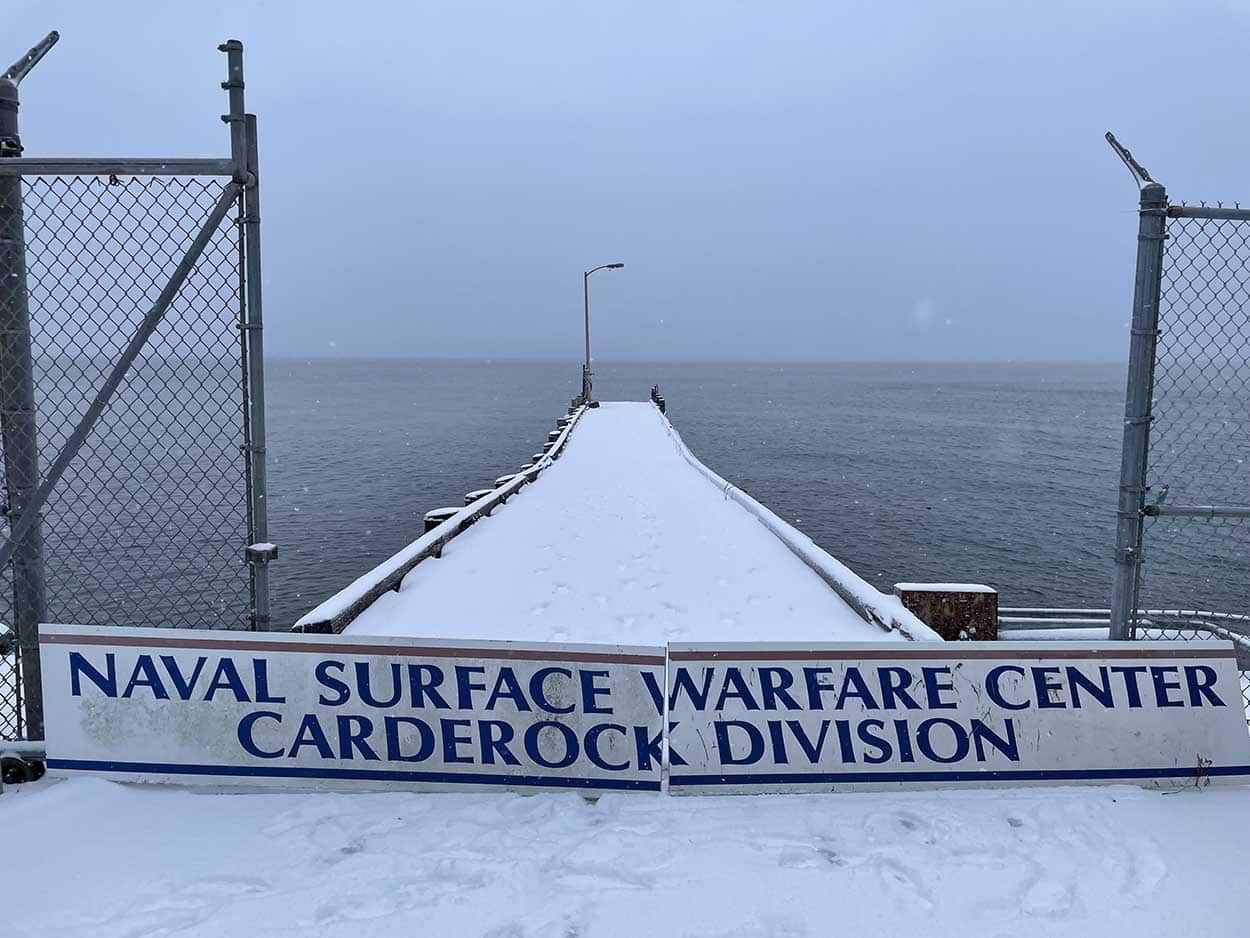
The lab’s pier, with a sign left behind by the Navy.
The lab operated from a barge moored at the site during its first decades. The Navy built its fully equipped acoustic lab on the shore – the building Ty Clarke is renovating – in 1973.
When it opened in 1953, the lab boasted state-of-the-art technology. That included reel-to-reel tape machines for data storage, racks of electronics and the best video displays the era could offer.
“The barge was the first place that I ever saw a CRT [cathode ray tube],” recalled Fox Island resident Patricia Peterson, whose father, Clarence Peterson, was instrumental in launching the lab and led its operations for many years. On that early visit, her father “told me that the pattern on the CRT was a train over in Steilacoom.”
Sub ran aground
Testing at the lab continued through the decades, mostly unnoticed, save for periodic newspaper announcements of tests that would close the range to powerboats. In 1988, it made news when the nuclear-powered sub USS Sam Houston ran aground off Fox Island while visiting the range. The Houston had to be rescued by four tugs while island residents watched from the beach (and the resulting New York Times headline, “Atomic Craft Aground Off Washington Coast” left locals scratching their heads regarding the Times’ grasp of geography).
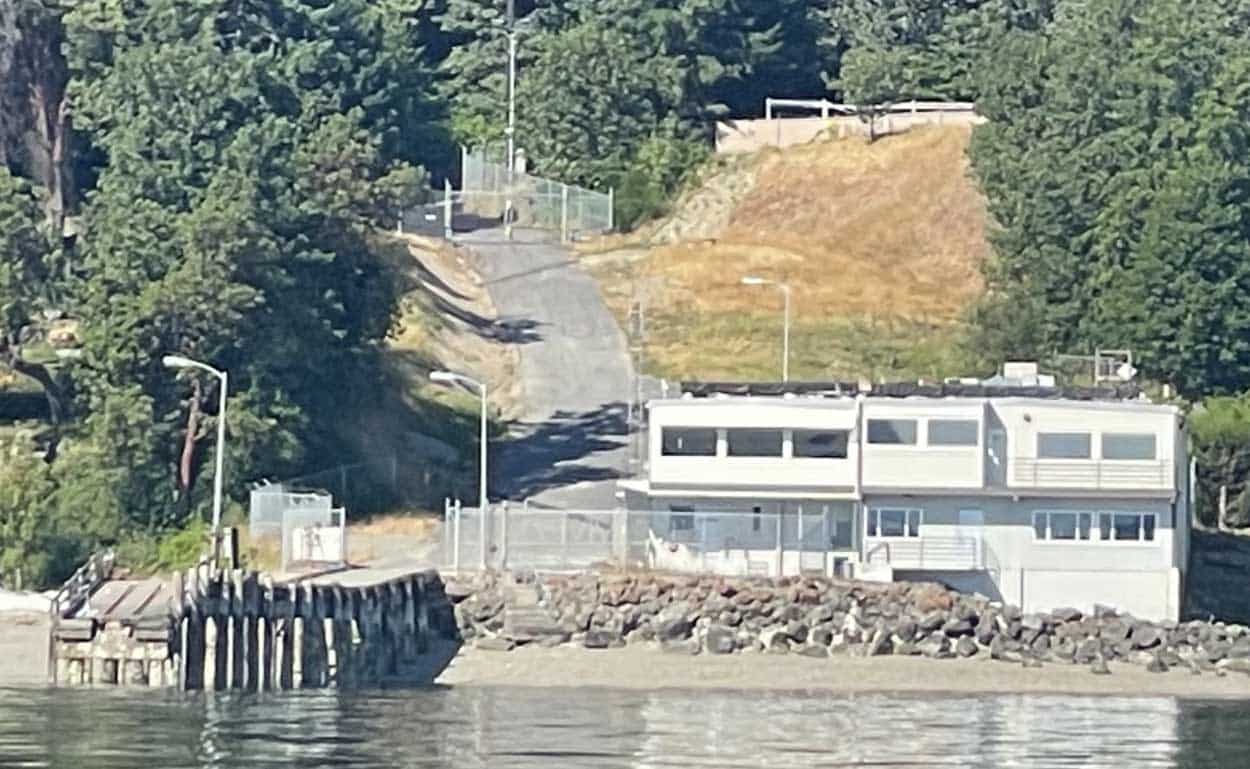
The view of the former Navy lab from the water.
In 1992, CIAR and a similar range in California were closed. The Navy cited “acoustic interference from industrial and residential development” and the limited size of the range. A new Southeast Alaska Acoustic Measurement Facility (SEAFAC) in Ketchikan, Alaska, replaced by them, according to a Navy history. The Navy still reserves the right to test in Carr Inlet. The most recent testing occurred in 2008.
The property continued as a flash point for disagreement, even as the federal government moved to get rid of it. In 2009, the Nisqually Indian Tribe emerged as a potential new occupant, with plans to house wildlife enforcement and oil spill response teams, as well as its Nisqually Aquatic Ventures commercial diving company, at the site.
Residents fight tribe’s plan
Nearby residents protested, saying the tribe’s plan constituted commercial or industrial use, which conflicted with the site’s zoning. They also voiced fears that if the property were placed in trust status for the tribe, local government would lose jurisdiction over it. Residents collected nearly 500 signatures on a “No Tribal Water Industry on Fox Island” petition. In the end, the tribe gave up its effort to take over the old lab and pier.
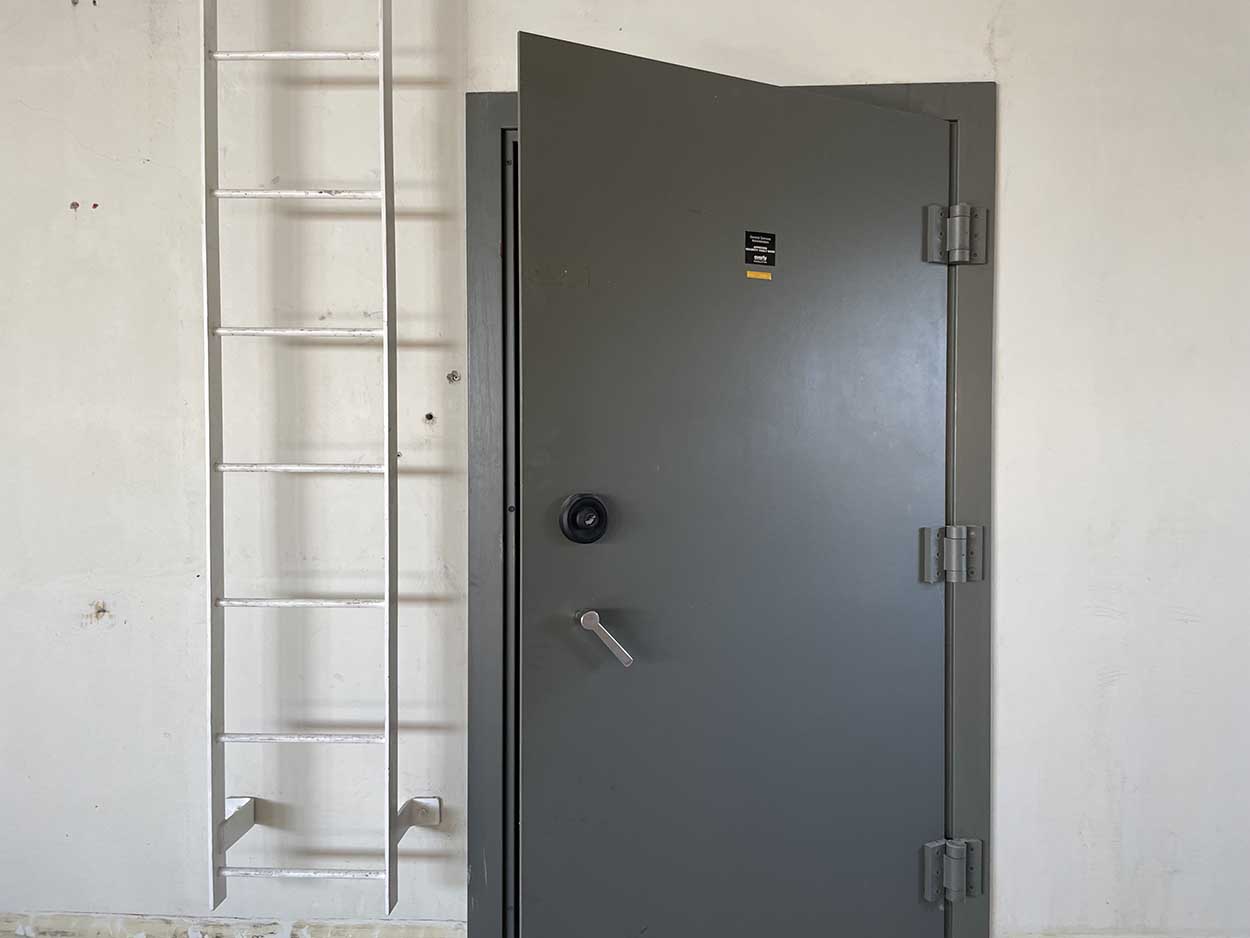
Ty Clarke plans to leave this vault door in place when he renovates the former Navy lab into his home.
On July 20, 2011, the General Services Administration auctioned the building, pier and 1.1 acres of land at 630 3rd Avenue to the public. GSA accepted a high bid of $600,000 from an entity called Property Redevelopment IV LP based in Houston, Texas. The partnership consisted of Gig Harbor businessman Stanley D. Stearns, and possibly other investors. Stearns owns Arabella’s Landing Marina and the Ship to Shore Marine kayak and boating supplies store in downtown Gig Harbor.
It’s unclear what Stearns planned to do with the property. He could not be reached for comment.
Clarke bought the property from Stearns for $1.775 million in 2021, property records show. Clarke said he purchased it knowing he wanted to live on the property, but without a clear plan as to how he’d proceed. He thought about tearing down the lab building. But as he got deeper into investigating it, Clarke realized the building is solid — and certainly unique. It made sense to keep it as the basis for his new home.
Family lives nearby
Clarke, a third generation Fox Islander, is at home on that beach. His parents, a sibling, his grandparents and two sets of aunts and uncles all live nearby.
The house abounds in features linked to its history. Under the pier and covered by water except at low tide, Clarke found a ship’s anchor that he estimates weighs more than 2 tons. He used a semi-truck to haul it up the beach and leaned it against the bulkhead, for decoration.
The visible steel beams and concrete floors inside the house will stay, and an old tower that he thinks was used as a radio antenna “could make a cool flag pole,” Ty Clarke said. A new working name for the house — “Sonar” — has replaced “Dr. Evil’s underwater lair.”
The quirkiest remnant of the lab building’s past is probably the Faraday cage, a vault-like room of approximately 1,200 square feet on the ground floor. It blocked electromagnetic fields and perhaps protected experiments or sensitive instruments. Clarke noted that the Faraday cage will stay in place because it’s part of the building’s structure. “It’s not going anywhere,” he said.
The doors of this chamber are heavy. One of them carries a plaque noting it will withstand “30 man-minutes against surreptitious entry” and “10 man-minutes against forced entry,” along with other security ratings. The doors could be removed, but Clarke doesn’t plan to. “We are planning to keep them in place just because you never see something like that in a house,” he said, “and it aligns with the theme of retaining as much of the Navy character as possible.”

